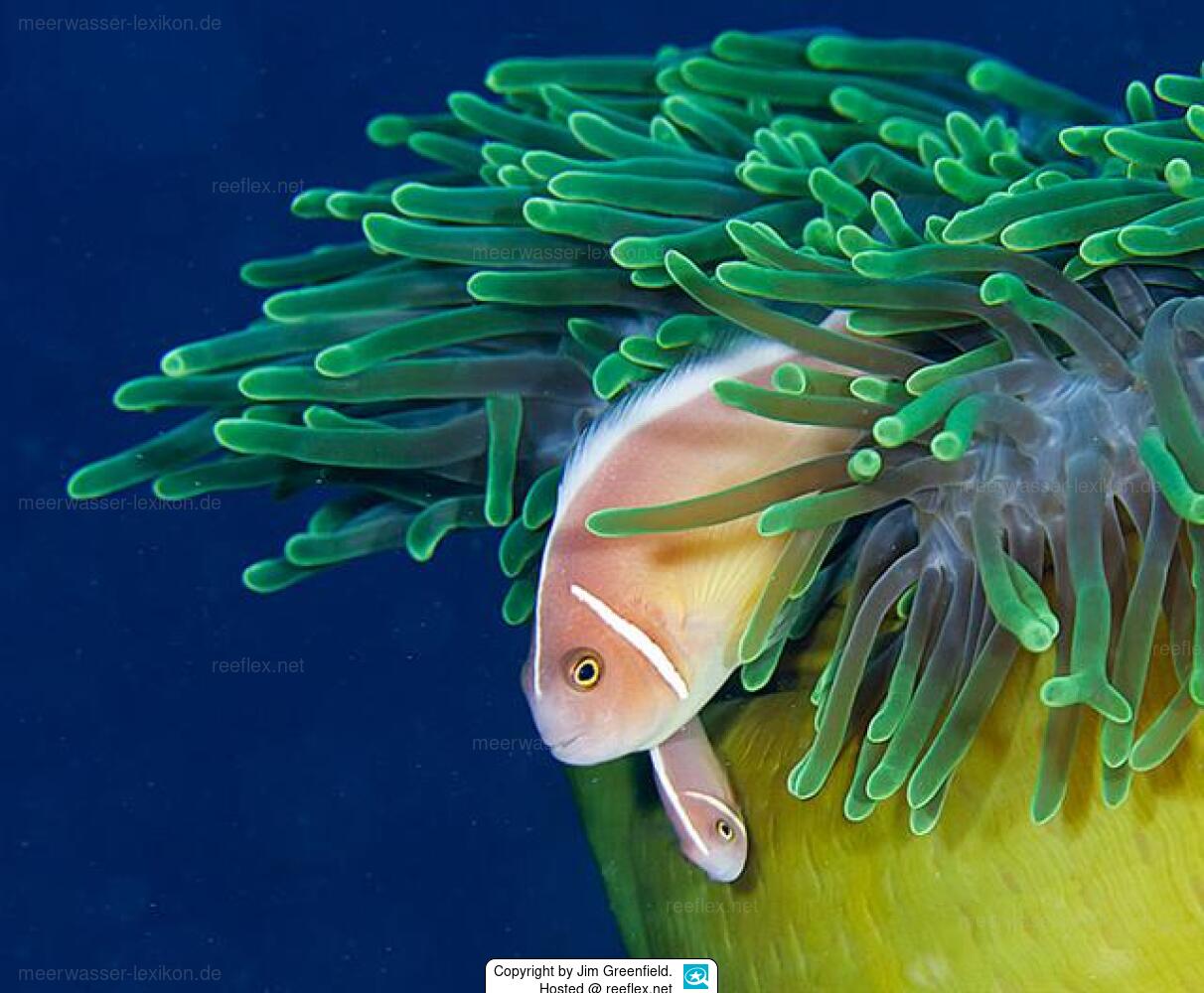Info
Lives with the anemone Radianthus crispa; mostly Radianthus magnifica; Macrodactyla doreensis and Stichodactyla gigantea.
Seems to be somewhat more sensitive than the better-known species, but this usually disappears with acclimatization.
Sex and mating.
Anemonefish are protandrous hermaphrodites, meaning that life begins as a male. If two juveniles of the same size are present, then the more dominant anemonefish will develop into a female. If two females of the same size are placed together, then the weaker female will form back into the male, but this will take some time and there will be fierce fighting. The reversion can take several weeks, and during this time the more dominant female will keep putting the pressure on the weaker female until the sex has changed.
If there are several anemonefish in the aquarium and the dominant female dies, the previously dominant male will revert to female and a previously suppressed animal will move up to the dominant male. By this adjustment the main task, the spreading of the "own genes" on fast way remains.
Once the disputes have settled and the roles are established, the female will continue to grow. The difference in size from male to female is about 1-3 cm depending on the initial size of the species.
Breeding information:
Spawning activity: 2 - 3 hours after the light comes on
Spawning interval*: 13 days
Spawning size**:
Number of larvae**: approx. 300 - 700 pieces
Clutch color day 1: orange and elliptical
Larval size: 3 - 4 mm
Fish larvae: are phototactic (decreases with the age of the larvae)
First food: Brachionus plicatilis - enriched or pelagic (free-swimming) copepods
The detailed description can be found at
HO, Y.-S. et al: Embryo Development and Larval Rearing of Pink Clownfish (Amphiprion perideraion). Environmental Science (2008 : DOI:10.29822/JFST.200803.0006Corpus ID: 86260207
* The water temperature influences the number of fertilized eggs and the spawning period (with a difference of e.g. 1° C, the difference can be ± 2-3 days) and, in the case of gonochoristic (separate-sex) fish or shrimp, the sex. If the temperature is below the usual regional temperature, mainly female larvae will hatch from the clutch, above this temperature mainly male larvae will hatch. Furthermore, the aquarium conditions (e.g. light duration, density) can also influence the sex.
** The spawning size or the number of larvae depends on several factors - age and condition of the parent animals, water conditions, food quality, stress factors and the dissolved oxygen content.
Danger of confusion
Easily confused with Amphiprion akallopisos.
Synonyms:
Amphiprion amamiensis Mori, 1966
Amphiprion peridaeraion (Bleeker, 1855)
Amphiprion perideraeus Bleeker, 1855
Amphiprion rosenbergi Bleeker, 1859
Amphiprion rosenbergii Bleeker, 1859
Prochilus perideraion (Bleeker, 1855)
Prochilus rosenbergi (Bleeker, 1859)







 Jim Greenfield, Großbritannien
Jim Greenfield, Großbritannien



































































